Allard Motor Company: The Records and Beyond
by Gavin Allard
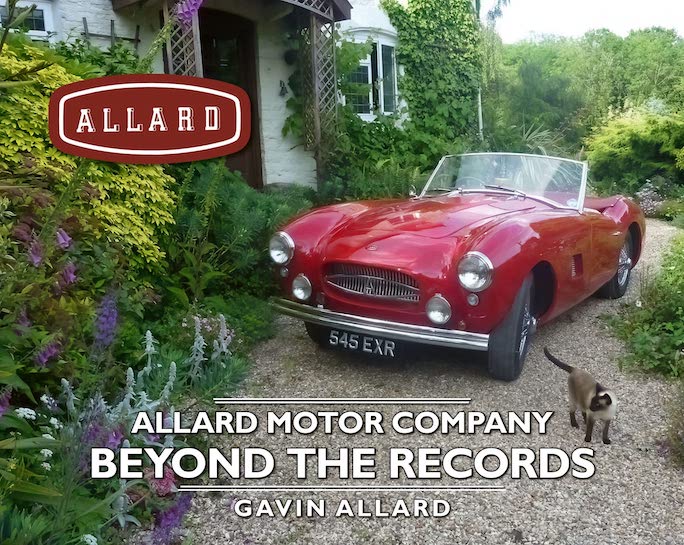
“As with much of the British car industry, Sydney could not keep up with car development as he wished and even though his 1952–55 model the Palm Beach did sell in some numbers its demise was set with Triumph’s TR series launch. Production did not stop so much as fade until just a single car remained in a corner uncompleted: a Palm Beach Mk.II model, the end of an incredible run.”
You look at the book title. You look in the garage. There’s no Allard there. Should you be interested in this book? Why, yes!
The author addresses his book to “the Allard owner or inquisitive reader.” It is no exaggeration to say that what’s shown in this two-volume opus is entirely unusual, the emphasis being on shown because there’s not a lot of writing here. If the word “Records” in the title has you thinking motorsports results, which would deservedly come to mind in an Allard context, you are entirely on the wrong path.
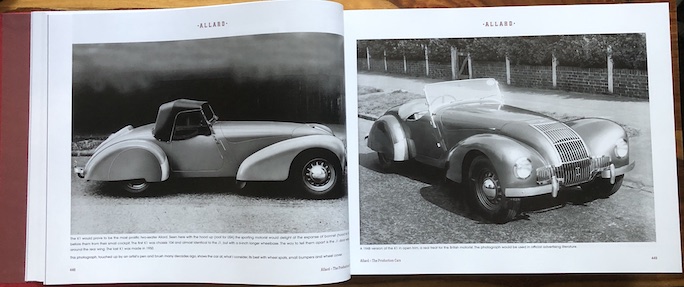
Not all Allards looked as good as this K1—see below!
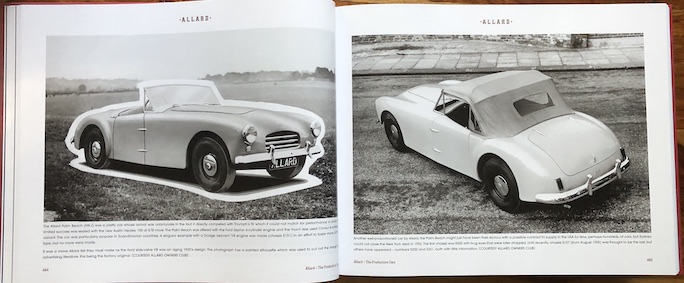
The introductory quote makes more sense now, doesn’t it? This is a Palm Beach model, and it was knocked out by the lowly Triumph TR. Pity, the engine sound alone should send a TR packing.
Ah, where to begin. Looking at the cover what catches your eye is the title: Allard, but what should really make you sit up straight is the name of the author: Allard, as in Gavin A., as in grandson of Allard founder Sydney Herbert A., as in historian/archivist of the Allard Owners Club. And archives are where records are kept, and that’s what this book is full of: the Allocation Book/s, the Record Cards, the Warranty Book, and the Service Records (examples below)— not excerpted or discussed or referred to but reproduced, in their entirety, for every chassis. Just thumbing through these 12 pounds of book will make you think that the good folks at Dalton Watson Fine Books must have taken a different Econ 101 class than just about anyone else because this niche-within-a-niche book does not exactly have obvious “blockbuster” potential.
not excerpted or discussed or referred to but reproduced, in their entirety, for every chassis. Just thumbing through these 12 pounds of book will make you think that the good folks at Dalton Watson Fine Books must have taken a different Econ 101 class than just about anyone else because this niche-within-a-niche book does not exactly have obvious “blockbuster” potential.
Now, if you are an Allardist (yes, that’s the word) you could not possibly be unaware that the long-defunct firm has regrouped, which is the context in which to see the 2021 release of the last Allard book of note (left). It was also by an Allard: Alan, father of Gavin, son of Sidney. Written with Lance Cole it had the ambitious title The Complete Story (ISBN 978-1785005596, Crowood Press) and it did “complete” the story by bringing it into the current era with the launch of the JR continuation model. But really complete in the sense of whole/full/total is the story only now with Gavin’s Records book, eight years in the making.
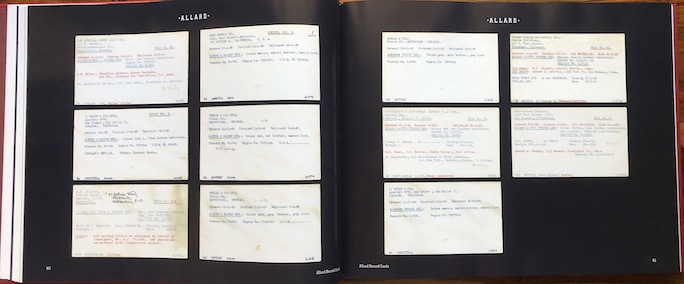
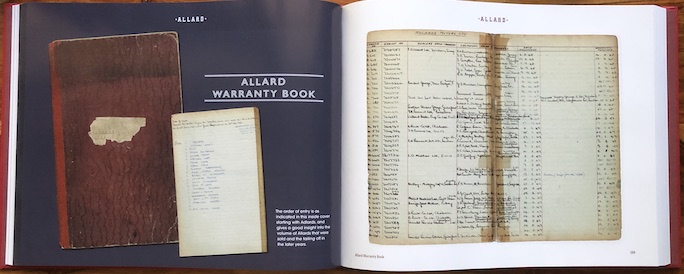
Anyone with a classic car, regardless of marque interests, can relate to wanting to look up a car’s build history. Often such attempts are thwarted, by a company’s slipshod record-keeping, by a catastrophic event, or by willful disposal. Even if records exist, there may not be anyone to shoulder the Sisyphus task of combing through them. That the Allard records do survive (albeit with some gaps due to a 1966 factory fire) and that the personal archives of several generations of Allards plus the Allard club’s records all reside under one roof, Gavin’s, and that he is willing and able to not just be a passive caretaker—all of these factors combine to make this book relevant to anyone with an interest in British motoring in general and the ins and outs of historic research in particular.
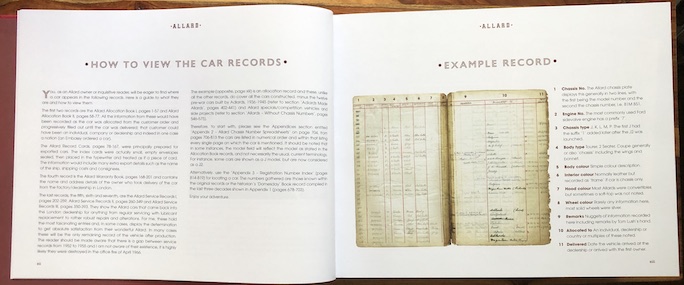
First order of business: read and read again the Introduction which spells out what categories of documents the book contains and how to work with them (example above). Short of brief intros to the various sections/chapters, Vol. 1 contains no narrative but only facsimiles of original records. The 11.5″-wide book is in landscape format which means originals, be it large ledger pages or small index cards, have to be reduced to fit. Which leads to item two: find yourself a magnifying glass! Not just because of the reduction in size but because many entries have faded and the cursive, handwritten ones will require some effort to decipher. If you are an owner, you will find your 1946–58 car here but not any of the pre-Allards, i.e. one of the 12 Adlards. Admittedly, there are limits to the entertainment value of Vol. 1 but the more you know about, say, the dealerships, garages, shippers, and possibly customers in that era the more discoveries you will make here.
Vol. 2 is where things get a lot more relatable.

How’s this for vigorous driving? Company founder Sydney Allard’s personal car. With typical British understatement the caption talks about an “off-road shake down test” and gives the date as February 1936 whereas the table on the left gives March 1936 as the “construction completion” date. That this is not an irreconcilable discrepancy or a typo will only become clear to you if you read all the fine print.
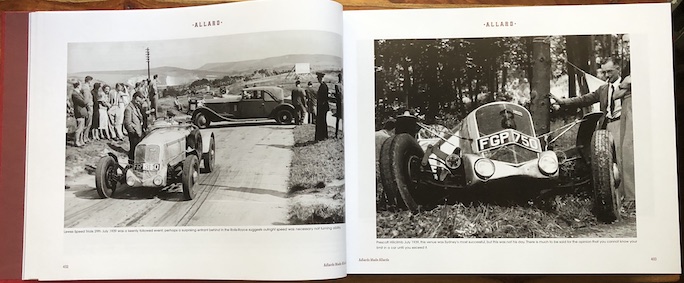
Ah, those Brits. The Rolls-Royce and the Allard are both participants in the same Speed Trial.
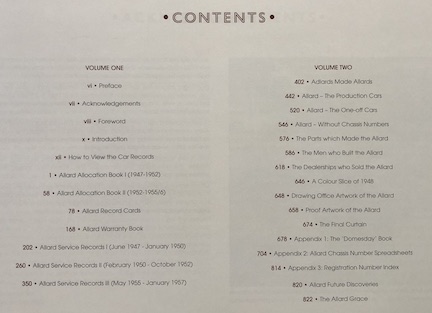 It should be noted that each volume begins with the Tables of Contents for both and that the pagination is consecutive. There is, by the way, no Index; it would have served an only limited practical purpose in Vol. 1 but Vol. 2 does cover people, events, locations etc., and model and technical references that one would surely want to find again. In both volumes you can see right from the outside without opening the book where certain sections start because those pages have a different color.
It should be noted that each volume begins with the Tables of Contents for both and that the pagination is consecutive. There is, by the way, no Index; it would have served an only limited practical purpose in Vol. 1 but Vol. 2 does cover people, events, locations etc., and model and technical references that one would surely want to find again. In both volumes you can see right from the outside without opening the book where certain sections start because those pages have a different color.
Vol. 2 presents, mostly in photos (many of which not published before) Allard models, how and where and by whom they were made, dealers, advertising etc. There is quite a bit more overarching text here, accompanying often extensive photo captions. Here the landscape format comes into play to full advantage.
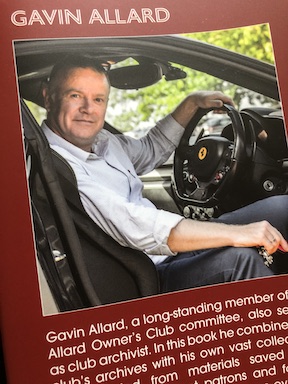
The book jacket photo. At the wheel of a Ferrari!!? C’mon, let’s get into character! By the by, there should not be an apostrophe in “Owner’s”.
Photo reproduction is excellent, but also the native quality of many images is quite unusually good. Coachwork, also unbodied chassis, close-ups of technical details, period ads, technical drawings—fascinating all. Appended are the Allard Domesday Book, a good 80 pages of chassis number spreadsheets, and a registration number index. And, as Gavin is the consummate archivist, he provides a blank page with columns matching his spreadsheet on which a reader can record any future discoveries.
The whole thing is, in short, a masterclass in archival work and historical research. Also, no matter how tiresome for the folks at Dalton Watson to hear, a splendiferous piece of bookmaking, design, and thoughtful organization. Gold stars all around.
Copyright 2023, Sabu Advani (speedreaders.info).


 RSS Feed - Comments
RSS Feed - Comments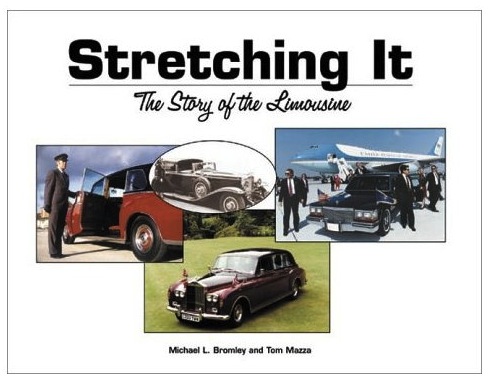

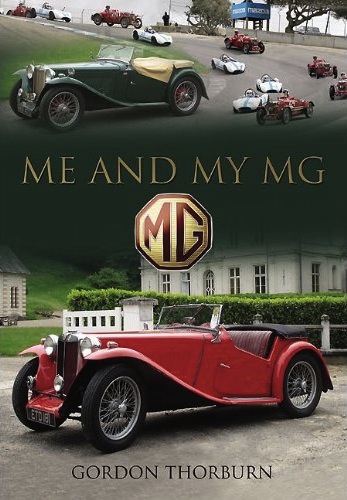


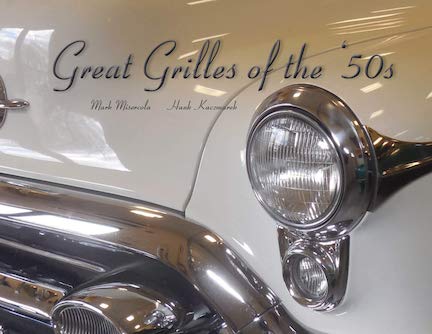
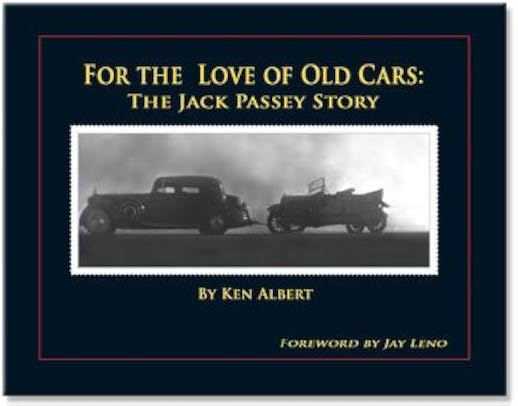




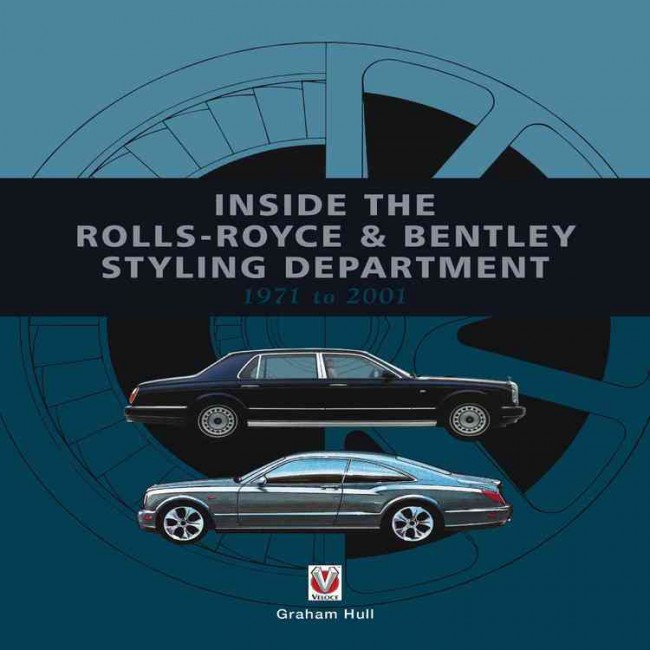

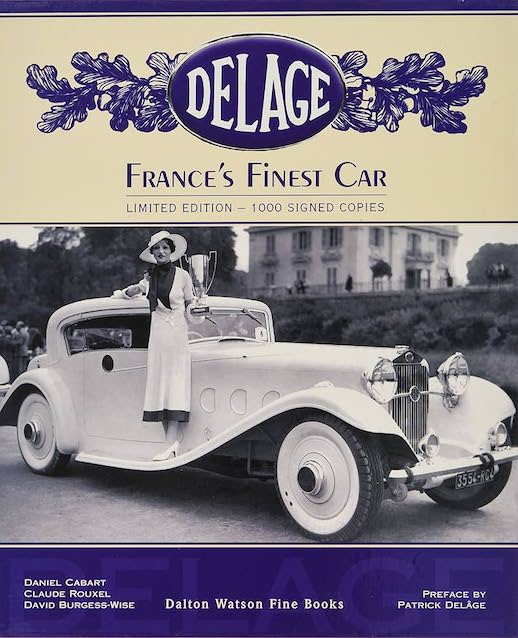
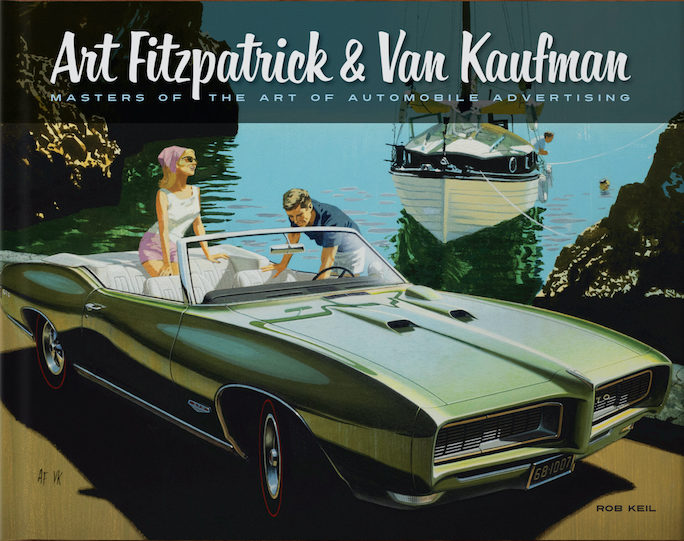


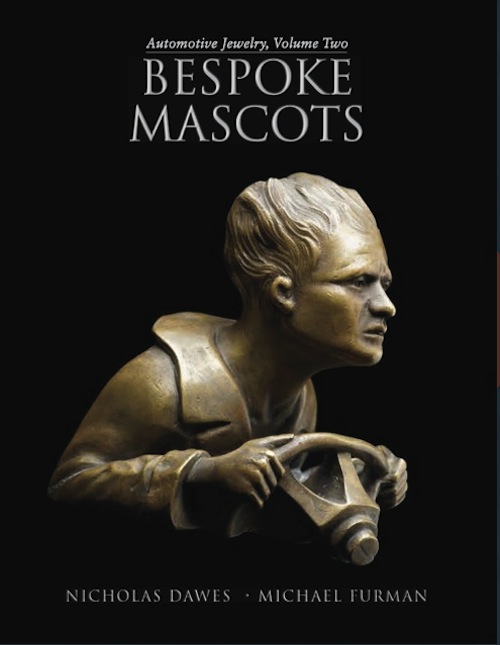








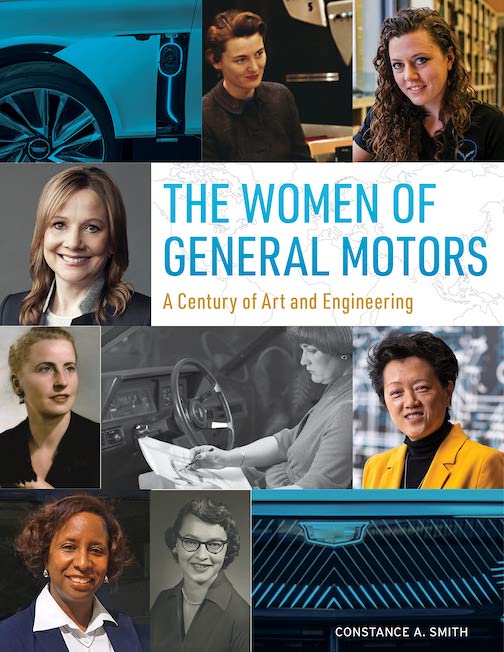


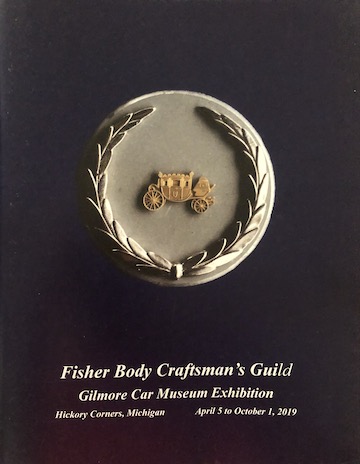
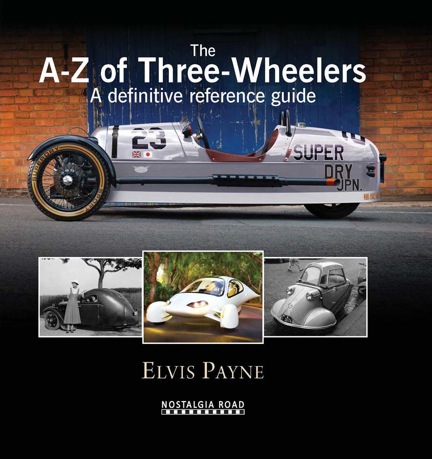



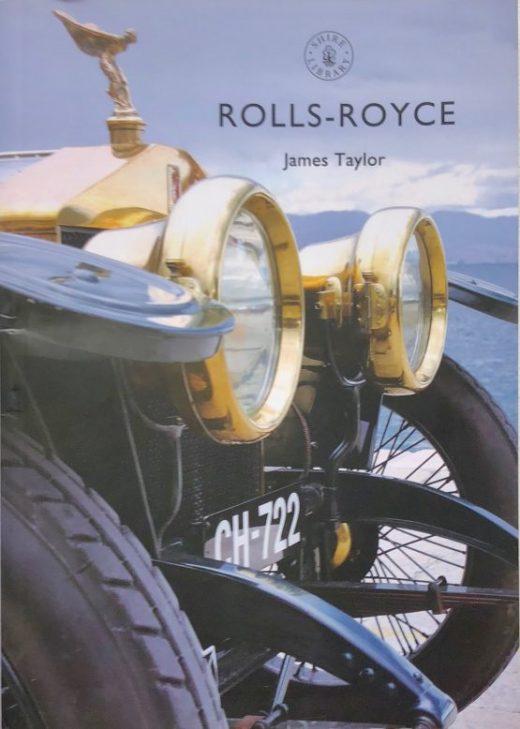
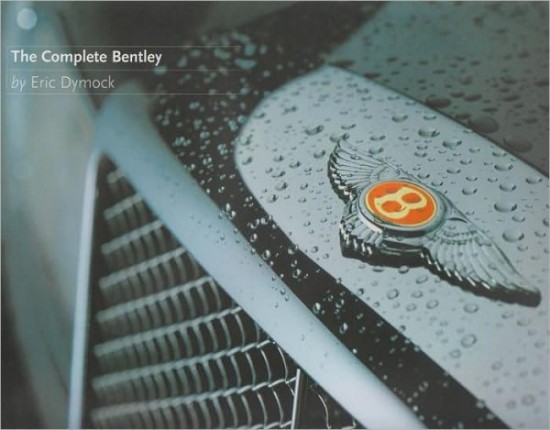


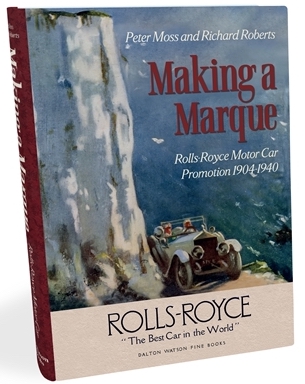
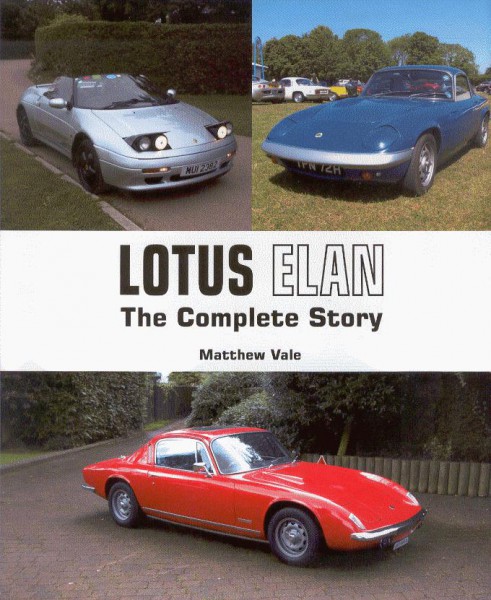

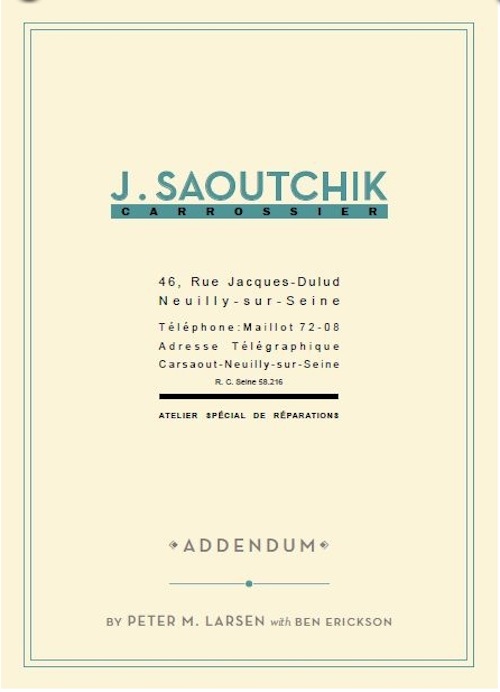

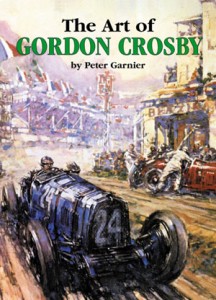

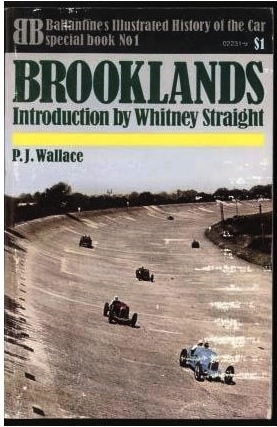
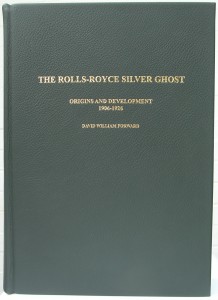
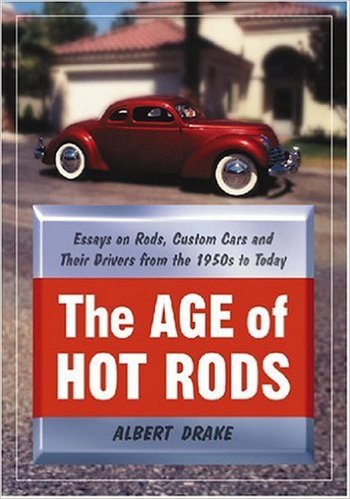
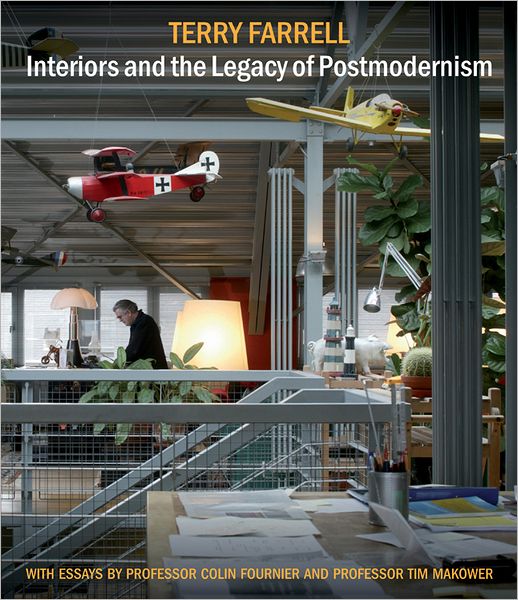
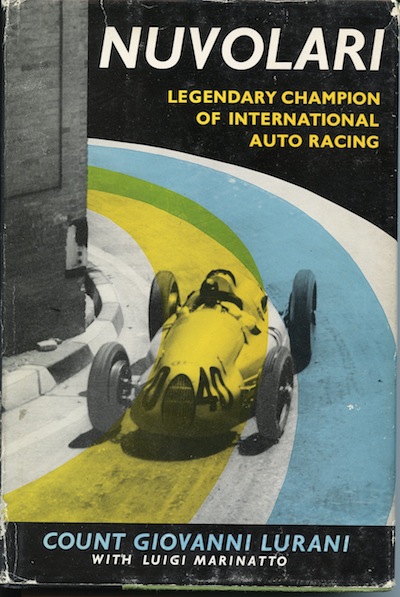




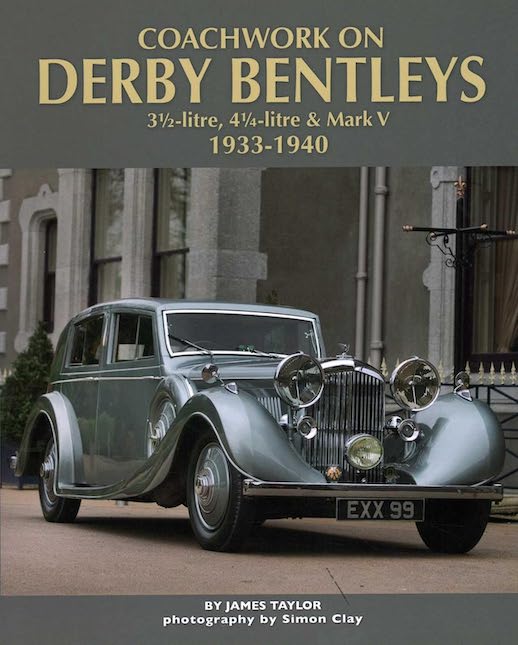
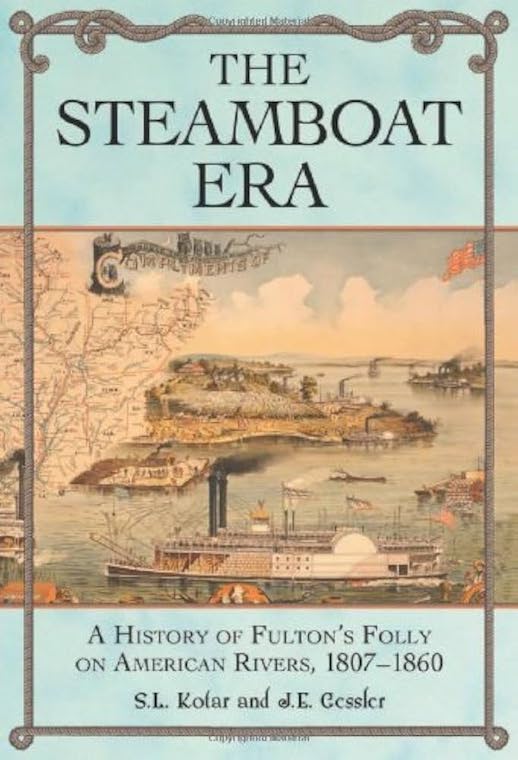




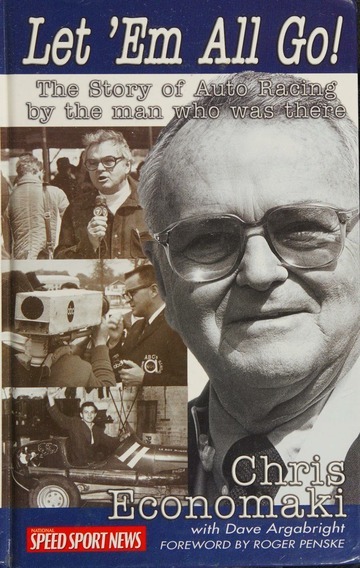










 Phone / Mail / Email
Phone / Mail / Email RSS Feed
RSS Feed Facebook
Facebook Twitter
Twitter